Dull knife blades are unavoidable. However, not ruining your knives is avoidable. So, how do you keep your knives sharp? You use a whetstone.
A whetstone is usually a rectangular stone block that is used to sharpen a blade edge. Depending on the stone’s “grit”, it can be used to restore a dull knife to its former sharpness or help to put an even finer point on an already sharp blade. To do this, you’ll need to repeatedly run the blade’s edge across the stone’s surface.
While a pull-through sharpener isn’t necessarily a bad choice, these devices usually have preset sharpening angles, so certain sharpeners are only designed to sharpen certain blades. If you run a Japanese knife through a sharpener designed for a Western knife, you could be shaving off way more material than you want due to a difference between the angles for the sharpener and knife. The sharpener itself also breaks down over time, so you also run the risk of busting your knife instead of fixing it.
Here’s everything you need to know about choosing and using a whetstone, along with a few suggestions to keep your knife collection looking sharp.
Table of contents
Why does grit matter?
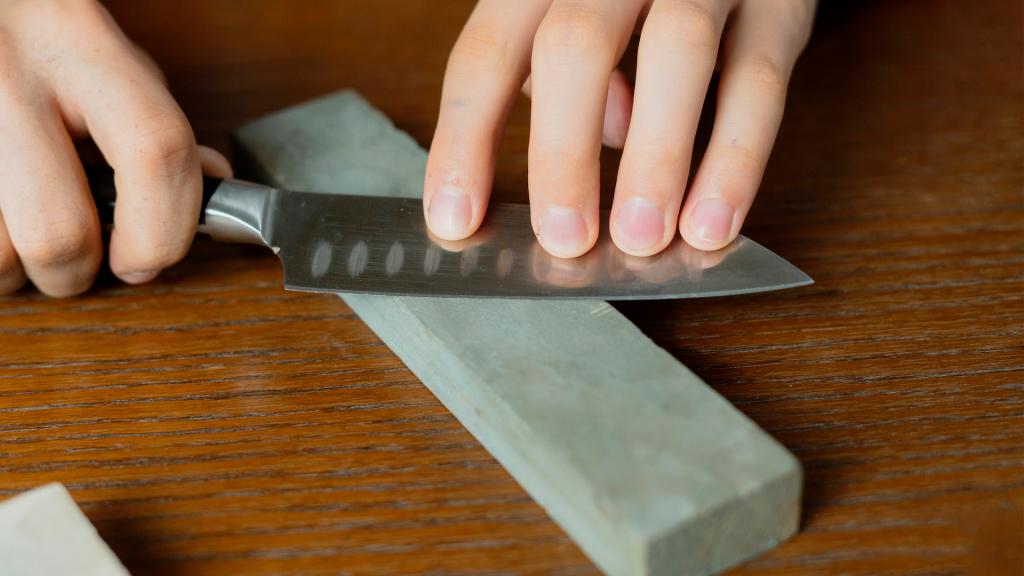
If you’ve looked at any whetstones, you’ve most likely seen one or two numbers listed alongside the sharpener, like 1,000 or 4,000. This is the stone’s grit size, which determines how abrasive the sharpening block’s surface is. The lower the grit, the coarser the stone and the more material you’ll take off when sharpening.
These are the three tiers of grit coarseness:
Coarse (Under 1,000)
If your knife’s blade is chipped or has completely lost its edge, this is what you use. Due to their coarseness, these whetstones will shave off a lot of material, so you’re best avoiding them as an everyday knife sharpener.
Medium (1,000 to 3,000)
A 1,000-grit whetstone is the most common sharpening stone you’ll come across. Depending on how regularly you sharpen your knives, you might be better off with something in the 2,000 to 3,000 range, so you can avoid shaving off too much from your blade.
Finishing (4,000 and above)
These stones are used for refining the edge of your blade to help you achieve some delicate, precision cuts. If the knife you’re sharpening is usually used for cutting meat, you’ll want a stone in the 4,000 to 6,000 range. If the knife is mainly used for chopping up fruit, veggies and/or seafood, use a stone with 8,000 grit.
Choosing a whetstone
The good news is that most whetstones are double-sided, so it’s very easy to find one with both a medium and finishing surface.
Sharp Pebble Premium Sharpening Stones (3,000/8,000)
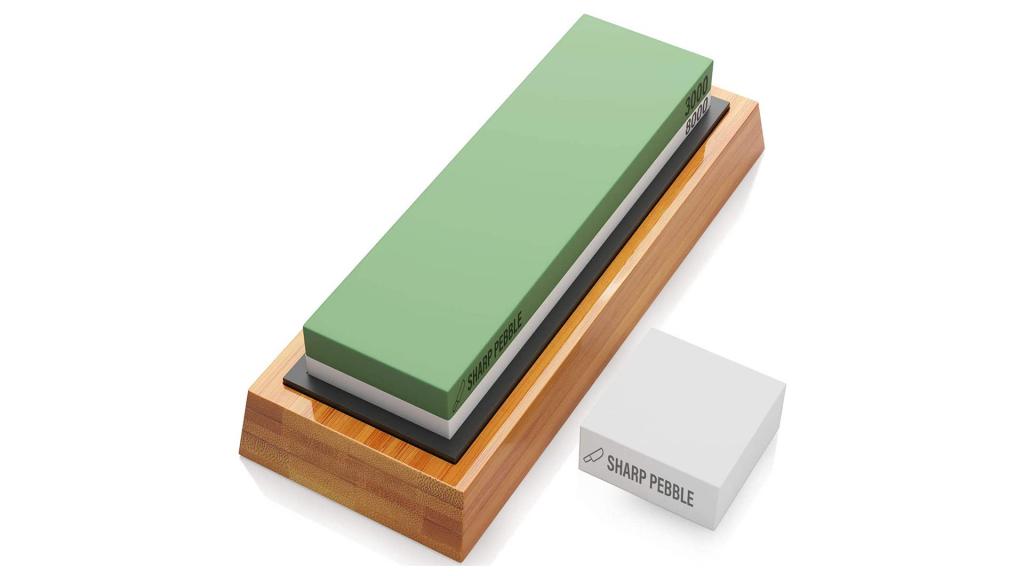
Sharp Pebble’s premium sharpening stone includes a double-sided whetstone with 3,000 and 8,000 grit. If your knife collection is one or two fancy Chef’s or Santoku knives, this will help maintain the blade’s edge. It also includes a flattening stone, which you can use to level out your whetstone after it develops a bit of a groove from being used.
Sharp Pebble Premium Sharpening Stones (1,000/6,000)
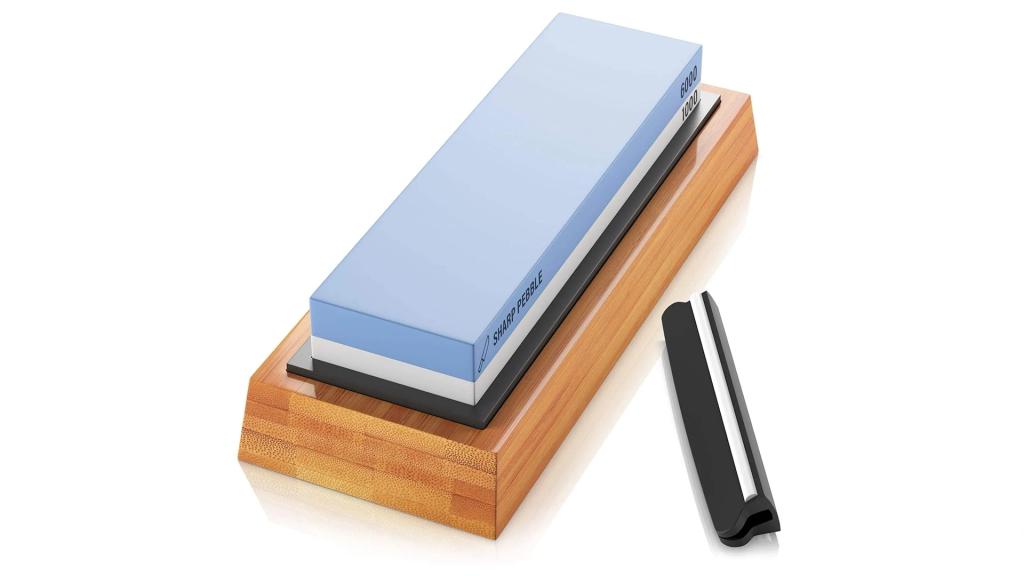
Sharp Pebble also offers a double-sided whetstone with a grit of 1,000 and 6,000. It even comes with a guide that will help you maintain a consistent, correct angle when sharpening your knife.
Sharp Pebble Premium Sharpening Stones (400/1,000)
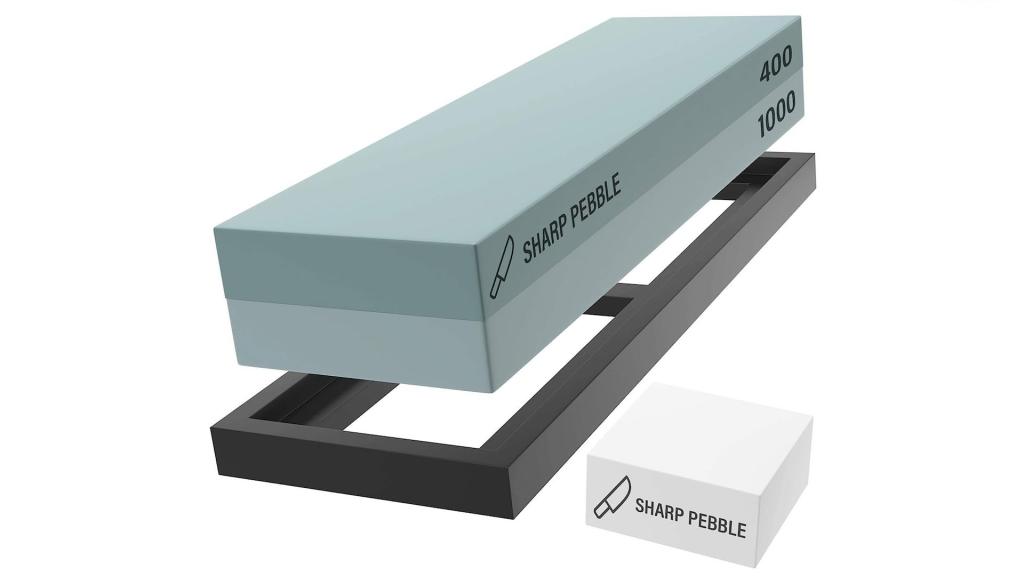
This 400 and 1,000-grit stone won’t be suitable for everyone, but if you’re constantly dealing with some incredibly dull or even damaged blades, this whetstone will help restore those edges to their former glory.
BRITOR Knife Sharpening Stone Kit (400/1,000 and 3,000/8,000)
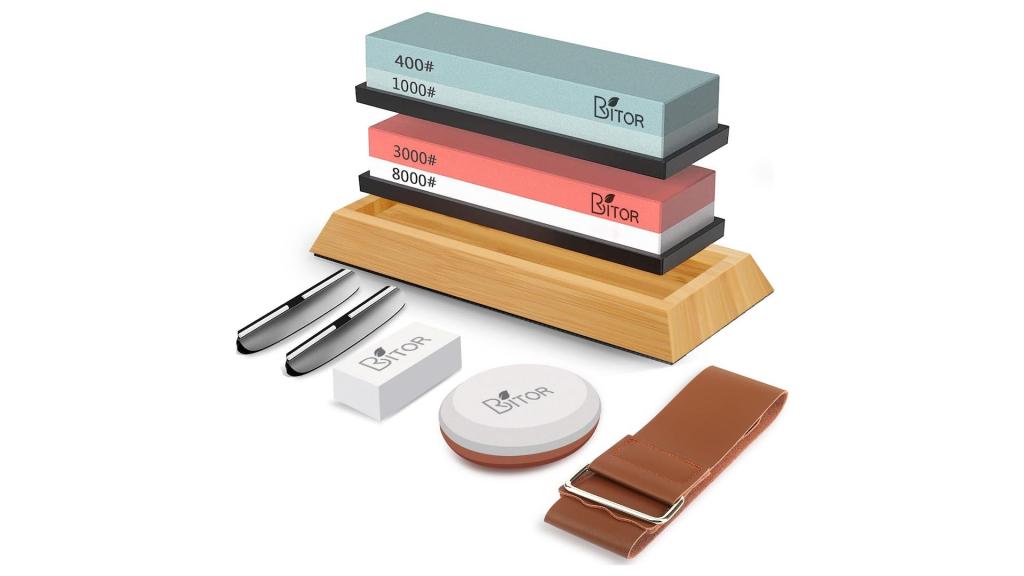
If you think you’ll also need a coarse stone, this BRITOR set includes two double-sided whetstones – one with a grit of 400 and 1,000, and another with a grit of 3,000 and 8,000. This set also includes an angle guide, a flattening stone to help relevel your whetstone and a leather strop so you can polish your knife and remove any burrs once you’ve finished sharpening it. If you’ve got a fairly big knife collection this set should keep you well covered.
How to use a whetstone
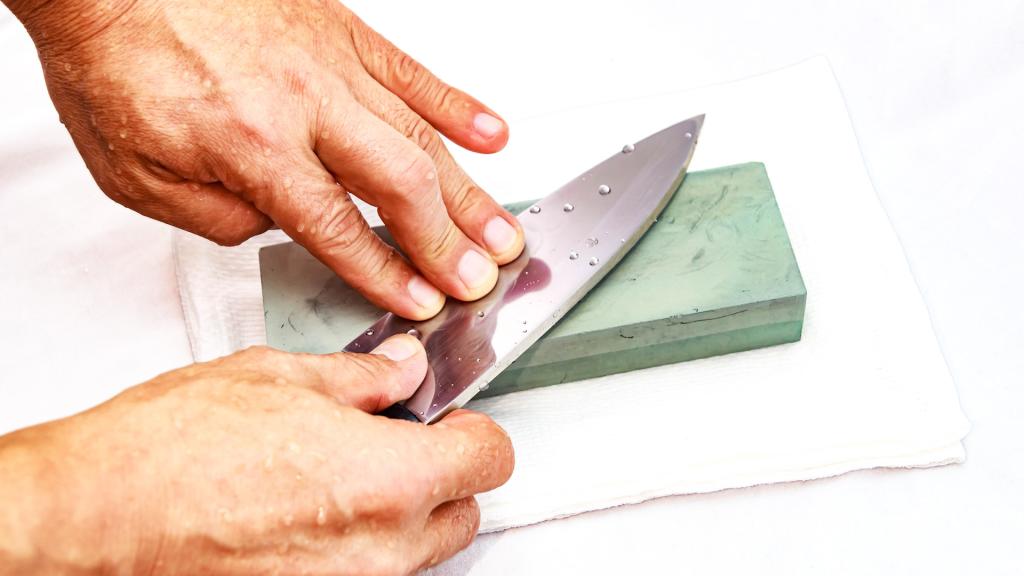
- For lubrication, you’ll need to pour some water over your whetstone before you start. Alternatively, you can also soak your whetstone in water for 10 to 20 minutes before using it (if you’re unsure of how long the whetstone should be submerged, follow the manufacturer’s suggestion). You’re best to keep a glass of water nearby, so you can regularly wet the stone throughout the process.
- Place the whetstone on a surface, like a tea towel or rubber mat, to stop the stone from sliding while you’re using it. If you’re lucky, your whetstone may come with a non-slip base, which is always a nice bonus.
- With one hand, you’ll need to angle the blade against the whetstone – usually, it’s 20 degrees for Western knives and 15 degrees for Japanese blades. If you’ve never used a whetstone before, you can buy a guide that’ll help you maintain the correct sharpening angle throughout the process.
- With your other hand, you’ll need to apply some pressure to the blade and then work the entire knife across the stone, from tip to base. You’ll need to do this a couple of times, depending on how dull your knife is. You’ll do this for one side of the knife, which will develop a burr. You’ll then need to flip it over and repeat the process on the other side until the burr is gone.
- The sound of the blade running against the whetstone should be consistent throughout. If it isn’t, that means you aren’t sharpening it consistently.
- Once you’re done, be sure to rinse your blade and whetstone to wash away any remaining metal particles. Let the stone naturally dry out before packing it away.
Lead image credit: iStock/FotoCuisinette
Here Are The Cheapest NBN 250 Plans You Can Get Right Now
Whether you’ve got the need for speed or simply looking for a better deal, these are the best prices going right now for the NBN 250 speed tier.
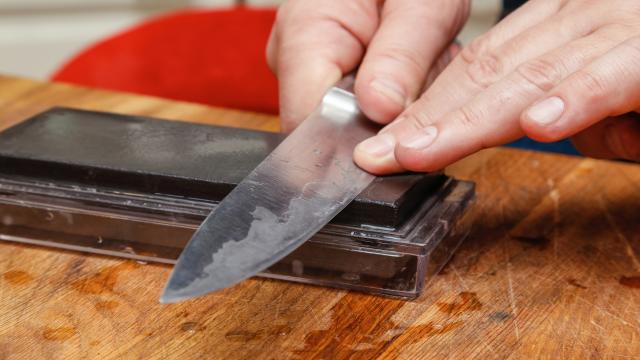
Leave a Reply
You must be logged in to post a comment.